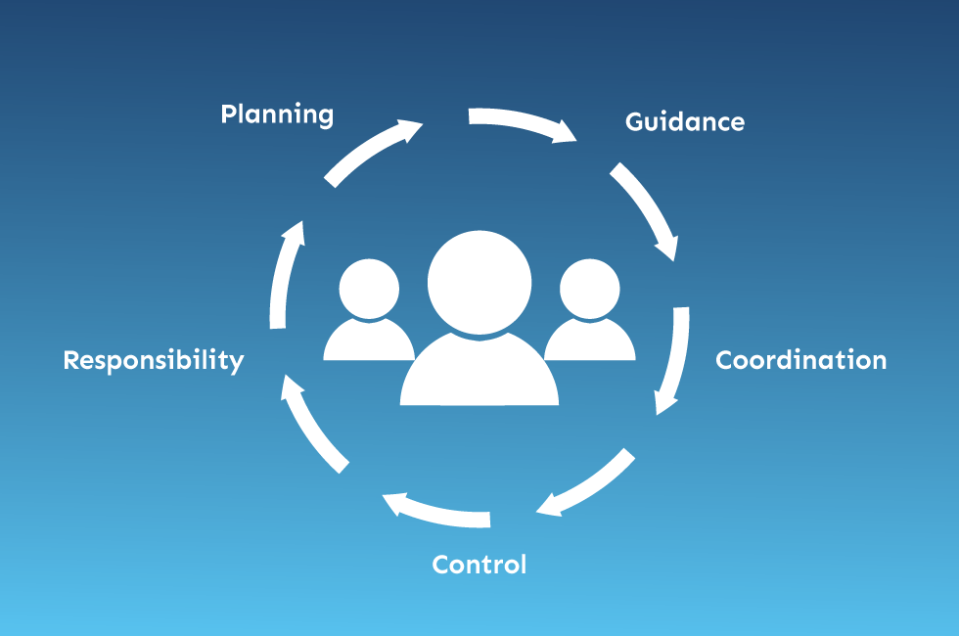Total Quality Manage...
18334 | 6 Apr 2023

In today's fast-paced and ever-evolving business landscape, organizations face a critical challenge: ensuring that they have the right people with the right skills to drive success. This challenge underscores the paramount importance of personnel planning, a strategic process that has become the cornerstone of modern workforce management. Personnel planning is not just a buzzword; it's the linchpin that holds together an organization's ability to adapt, grow, and thrive in a competitive environment. In this article, we will explore why personnel planning is of utmost importance in the contemporary business world, shedding light on the myriad ways it impacts an organization's efficiency, productivity, and overall success.
Personnel planning, often referred to as workforce planning, is the systematic process of strategically aligning an organization's human resources with its short-term and long-term goals. It involves forecasting future staffing needs, identifying the necessary skills and talents, and implementing strategies to ensure that the right individuals are in the right positions at the right time. Personnel planning aims to optimize human capital, improve operational efficiency, and support an organization in achieving its objectives by addressing recruitment, training, development, and retention of employees in a proactive and coordinated manner.
At its core, workforce planning is a strategic endeavor aimed at maximizing results by setting clear objectives. It's like plotting a roadmap that leads to organizational success. This planning encompasses five vital parameters:
HR functions are primarily the domain of HR professionals, but HR managers play a pivotal role in overseeing and leading these efforts. They assume the mantle of guiding the HR department, providing valuable insights and direction, advising top management on critical HR matters, and ensuring that HR strategies remain intricately aligned with the overarching goals and vision of organizational development. HR managers act as the linchpin that connects HR professionals' expertise with the broader strategic objectives of the company, facilitating a seamless integration of human resources into the company's growth and success.
Effective workforce planning is not a haphazard process; it operates on the foundation of four fundamental principles. Each principle plays a crucial role in shaping the way organizations strategically manage their human resources to achieve their goals. Let's explore these principles in detail.
Effective workforce planning operates on these four principles:
Workforce planning isn't just about having the right number of employees; it's about aligning your workforce with your organizational objectives. By understanding the core objectives of workforce planning, organizations can harness their human capital effectively. Here are the key objectives that drive workforce planning.
Workforce planning serves several key objectives:
Collaboration is at the heart of successful workforce planning. It involves multiple stakeholders, each contributing their expertise to ensure that the organization's human resources are optimally managed. In this section, we'll uncover the key participants who play a pivotal role in the workforce planning process.
Collaboration is key in workforce planning, involving:
What happens when organizations neglect or mishandle workforce planning? The consequences can be far-reaching, impacting both the organization and its employees. From chronic staffing imbalances to employee dissatisfaction, understanding these repercussions underscores the critical importance of effective workforce planning.
Neglecting workforce planning can result in detrimental consequences:
Workforce planning is not a one-size-fits-all endeavor. Different organizations adopt various approaches to tailor their workforce planning strategies to their unique needs. In this section, we'll explore the diverse approaches to workforce planning, highlighting their strengths and contexts where they shine.
There are various approaches to workforce planning, differing in their perspectives:
Workforce planning is the compass that helps organizations navigate the complex terrain of human resources management. By understanding its principles, objectives, and methods, businesses can ensure they have the right people in the right places, poised for success. Effective workforce planning is not just a strategy; it's a commitment to shaping a brighter future for both employees and the organization they serve.
What are your thoughts on the subject above? Feel free to post a comment or start a discussion.
TAGS: Workforce Planning, HR Strategy, Talent Management, Staffing Needs, Personnel Planning, Human Capital, Strategic Objectives, Employee Development, HR Professionals, Organizational Goals, Workforce Efficiency, Skills Assessment, HR Department, Employee Engagement, Staffing Imbalances, Training and Development, Workforce Analysis, Recruitment Strategy, Staff Structure, Flexibility in HR, Employee Satisfaction, Workforce Alignment, Staff Retention, HR Management, Training Programs, Workforce Optimization, Talent Acquisition, Skill Development, Organizational Success, Personnel Strategy.
Leave A Comment